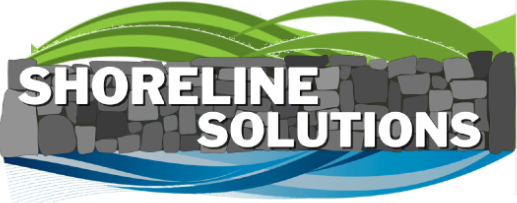Why Retaining Walls Fail:
5 Warning Signs
Living near Grand Lake's beautiful shoreline comes with unique challenges, especially when it comes to maintaining retaining walls.
Essential for many lakefront properties, retaining walls protect your property from soil erosion and water damage, but they're not immune to failure.
Let's explore why retaining walls fail and how to protect your investment.
Understanding Grand Lake's Unique Environment
Grand Lake O' the Cherokees presents specific challenges for retaining walls.
The lake's clay-rich soil expands dramatically during Oklahoma's wet seasons (typically March-June) and contracts during summer droughts.
Water levels can fluctuate by 5-10 feet seasonally, with the highest levels during spring rains and lowest typically beginning in late summer.
Heavy boat traffic from May through September creates constant wave action, especially on the main lake and in popular areas like Monkey Island and Duck Creek.
Local weather patterns, including freeze-thaw cycles in winter and intense summer storms, put extra stress on walls.
And, the lake's numerous coves and irregular shoreline mean some properties face greater exposure to wind-driven waves, particularly along the main channel and wider sections near Grove and Disney.
Retaining Wall Failure Warning Signs
Retaining wall failures at Grand Lake can decrease property values by 15-25% and create unsafe conditions for docks and waterfront activities.
With 1,300 miles of shoreline facing erosion from water level changes, wave action, and storms, proper wall maintenance is crucial.
Early repairs typically cost $2,000-$5,000, while complete replacements can be extremely costly – making prevention and maintenance of your retaining wall your best investment.
Warning Sign #1: Visible Soil Loss
Soil erosion behind or around your wall is a major red flag. Monitor these areas regularly:
- Wall corners where sections meet
- Areas near drainage points
- Base of the wall
- Spots where landscaping meets the structure
Use metal stakes with measurement lines, take dated photos, and document any changes after storms or seasonal transitions.
Warning Sign #2: Unstable Ground
Ground instability causes 30% of wall failures at Grand Lake. Watch for:
- Cracks in soil wider than 1/4 inch
- Sunken areas near the wall base
- Tilting trees or fence posts (over 15 degrees)
- Soil separation from wall footer
- Water pooling in new areas
Perform monthly stability checks using simple tools like a digital level and steel rod to test soil resistance.
Warning Sign #3: Water Drainage Issues
Poor drainage leads to 40% of wall failures. During heavy rains, saturated soil increases lateral pressure by 60% against retaining walls. Look for:
- Water stains on wall faces
- Standing water 48 hours after rainfall
- Clogged drainage outlets
- Foundation settlement
- Gaps between wall segments
Test drainage by pouring water near the wall and monitoring how quickly it dissipates. Proper drainage should show less than 1-inch standing water after 24 hours.
Warning Sign #4: Vegetation Changes
Plants tell stories about wall stability. Monitor for:
- Dead or dying plants near the wall
- Exposed root systems
- Soil level changes
- Stress in native Oklahoma plants like sage and switchgrass
- Uneven growth patterns
Track these changes monthly with photos and measurements to catch problems early.
Warning Sign #5: Shoreline Deterioration
Watch your shoreline for:
- Uneven beach erosion
- Wave action damage at the waterline
- Dock stability issues
- Property line shifts
- Exposed wall footings
Be sure to document changes quarterly and after major storms.
Grand Lake O' the Cherokees presents unique challenges for retaining walls, influenced by factors such as the lake's expansive clay-rich soil, fluctuating water levels, and intense boat traffic.
Seasonal variations, freeze-thaw cycles, and heavy summer boat traffic and storms place significant stress on retaining walls, while the irregular shoreline and frequent wave action add further wear.
Properties located along the main channel and popular areas like Monkey Island and Duck Creek face particularly high exposure to these environmental factors.
Identifying early warning signs of retaining wall failure is crucial to maintaining property value and ensuring safety.
Indicators include visible soil loss, unstable ground, water drainage issues, vegetation changes, and shoreline deterioration.
Regular monitoring and maintenance can help prevent costly repairs, with simple checks like measuring soil erosion, monitoring drainage efficiency, and tracking changes in vegetation and shoreline stability.
By addressing these issues early, property owners can safeguard their investment and avoid the significant costs associated with complete wall replacement.
And if you are ready for some professional help in maintaining or repairing your existing retaining wall, give us at Shoreline Solutions a call now at (918) 944-0855.
